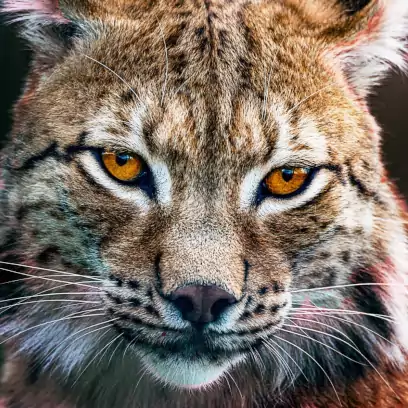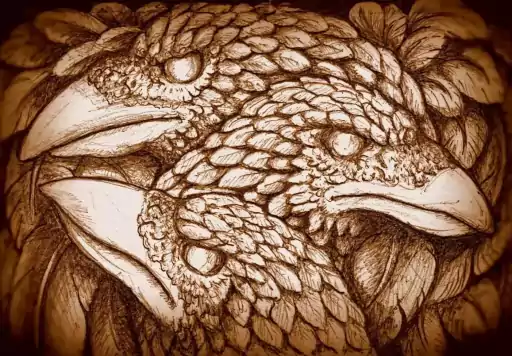
Therapeutic Shamanism
Learn To Follow Your Soul's Wild Calling...
Online Shamanic TRAINING
Discover our accessible and affordable online workshops and training. Most aspects of shamanism and animism are covered and at all levels, from beginner’s courses to shamanic practitioner training.
Therapeutic Shamanism Books
The best-selling and highly-rated “Therapeutic Shamanism” series of books. Comprehensive and practical, guidance for developing a grounded and in-depth shamanic and animist spiritual practice.
Free Resources & Information
Learn more about animist spirituality and the links with psychotherapy, and ecology. Read about soul-loss and soul-retrieval, find videos, podcasts, download free shamanic drumming MP3s, and more.
Online Shamanic Training
First Steps
Discover what shamanism and animism are and what they can do for you, learn how to do a shamanic journey, discover your power animal, and much more!
Next Steps
Delve deeper into Therapeutic Shamanism with this series of online workshops for people who have attended one of the college’s First Steps courses.
Further Steps
Take your shamanic and animist practice to new levels. A rich and diverse range of topics to explore, including soul retrieval.
View all our online courses to find out more, including our Shamanic Practitioner training, and Shamanic Counselling and Psychotherapy workshops.
THERAPEUTIC SHAMANISM Series of Books
The first-ever systematic, fully-comprehensive shamanic training and in-depth written guide to modern shamanic practice.
The latest book in the series

Finding Your Deep Soul
Guidance for authentic living through shamanic practices
The Book Your Soul Has Been Waiting for You to Find
Modern-day society is not designed to help us find our Soul. Instead, we have lost our way and lead domesticated and tamed lives, cut off both from our own true nature and from the natural world too. These days, the sad truth is that most people live and die without knowing who they really are, never knowing the magnificent being that Mother Earth intended them to be.
This was not always the case. In recovering the wisdom and knowledge of our hunter-gatherer shamanic ancestors, we can remember what we are meant to be. If we free ourselves from the distorted stories that our culture tells us, we discover that our true nature is something that is altogether more beautiful and profound than we have been led to believe. We remember how to live in right-relationship with ourselves, with each other as humans, and with the more-than-human world too.
Latest Blogs
Subscribe to our newsletter
- Free articles, book samples, videos and eBooks
- Release dates for new books in the Therapeutic Shamanism series
- New course dates and other information
Latest News
Therapeutic Shamanism FAQ
A more comprehensive FAQ can be found on our FAQ page.
Introduction to Therapeutic Shamanism
What is Therapeutic Shamanism?
A safe, modern approach to ancient shamanic wisdom that blends journeying and healing practices with psychology to restore wholeness and resilience.
How could learning Therapeutic Shamanism benefit me
It helps restore vitality, heal trauma, deepen purpose, and build authentic relationships with self, others, and nature.
What is shamanism?
Humanity’s oldest spiritual practice, where practitioners journey to other-than-ordinary realms for healing, wisdom, and guidance.
What is animism?
The understanding that everything is alive and interconnected—humans, animals, plants, rivers, mountains, and Earth itself.
What is the difference between shamanism and animism?
Animism is the worldview that all life is alive and connected; shamanism is the practice that arises from it.
Can anyone learn to do shamanic journeying?
Yes—it’s an innate human ability. With practice and guidance, most people can reconnect with it.
Power and Soul
What is Power-loss?
A loss of vitality caused by disconnection from nature and the wider world. It can be healed through reconnection and Power Animal retrieval.
What is Soul-loss?
When parts of us leave due to trauma or shock, leaving us feeling incomplete. Healing comes through Soul Retrieval, which restores wholeness. Find out more about soul loss and shamanic soul retrieval here .
What is the difference between Soul and Spirit in animism?
Soul is our unique Earth-rooted blueprint; Spirit connects us to the greater whole. Together they form the Tree of Life.
How does the physical body fit into shamanism?
The body is sacred and central. It holds the Soul and shows when we are aligned or disconnected from our authentic self.
Traditions, Plants & Allies
What traditions and cultures does Therapeutic Shamanism draw on?
It draws on universal animist and shamanic principles found worldwide, blended with modern therapeutic insights, without cultural appropriation.
Do you work with Plant Spirit Medicine on your courses?
Yes, but through journeying and practices like “grokking”, not entheogens. Plants are honoured as living allies.
What is a Power Animal?
A spirit ally in animal form who restores vitality, offers protection, and guides us. The relationship is reciprocal and deeply healing.
Courses & Learning
Do I need any prior experience to join the First-Steps course?
No — it starts from the basics and guides you step by step.
How do I book on a course?
Click “Book Now,” complete checkout, and pay. You’ll receive email confirmation and access to your course.
What payment methods do you accept?
PayPal and credit/debit cards.
How long does it take to learn to journey?
Some succeed on their first attempt; for others it takes weeks or months. Like any skill, it deepens with practice.
Can I skip the First-Steps course if I’ve trained elsewhere?
No — everyone starts with First-Steps as it lays unique foundations. Even experienced practitioners find it vital.
I’ve already read the books. Will I get anything more out of doing the courses?
Yes — the courses are experiential, guided, and community-based, offering far more than reading alone.
What are the Therapeutic Shamanism series of books?
Written by Paul Francis, they provide a practical and in-depth guide to animist and shamanic practice for modern times.
How do I train to be a shamanic practitioner?
Progress through the First, Next, and Further-Steps courses, then apply for practitioner training when ready.
Do I have access to the tutors to ask questions?
Yes — courses include support from tutors and access to discussion groups.
What if I can’t attend the live sessions?
All sessions are recorded and available afterwards, so attendance is optional.
How long do I have access to course materials?
Lifetime access, as long as you have an account, including free repeats of courses.
Do you offer discounts or reduced fees?
Prices are kept permanently low. Instalments are available, but further concessions aren’t.
Who are the main tutors in the college?
Paul Francis, Cat Anderson and Kaja Gulic — each bringing unique skills and experience.
What makes this college special? Why should I study with this college in particular?
A unique blend of ancient wisdom and psychology, ethical practice, lifetime access, and a thriving community.
I am neurodivergent. Will this get in the way of my learning shamanism?
Not at all—many neuro-wild students thrive thanks to flexible learning and inclusive community support.
What is your refund policy?
Refunds are available if you cancel within the specified timeframe, as outlined in our booking terms.
Healing, Psychology & Spirituality
What mental health issues can Therapeutic Shamanism help with? And, is shamanic healing safe?
It can support issues like anxiety and disconnection but is not a substitute for therapy. Safety requires grounding and resilience.
What are the links between shamanism and psychotherapy?
Both aim at healing and wholeness; together they form a rich, complementary approach.
Does therapeutic shamanism fit with IFS (Internal Family Systems therapy)?
Yes — both recognise inner parts and seek their healing and integration. Find out more in our blog about IFS, Shamainsm, and Parts-of-Self
What do animism and Therapeutic Shamanism say about spirituality?
Spirituality is natural, practical, and experience-based—not religious or dogmatic.
What are the main psychotherapeutic influences of Therapeutic Shamanism?
Humanistic (Person-Centred) and integrative, including IFS, Gestalt, Focusing, Depth Psychology, trauma-informed work, and more.
Core Shamanic Practices
What is soul-loss and soul-retrieval?
Soul-loss occurs when parts of us split off through trauma; retrieval restores them to bring healing and wholeness. Find out more about soul loss and shamanicv soul retrieval here.
What are the “Shamanic Realms”?
The Upper-World, Middle-World, and Lower-World—realms accessed in journeying for healing and guidance.
What is the Lower-World journey?
A safe, healing realm of nature where we find lost soul parts, Power Animals, and allies.
What is the underworld in shamanism?
The human unconscious, not a shamanic realm. Healing it requires psychological and body-based approaches.
How is journeying different from meditation?
Meditation cultivates presence; journeying is active exploration of non-ordinary reality.
Ethics & Professional Standards
What ethical standards do your courses follow?
Safety, respect, informed consent, confidentiality, diversity, anti-bullying, and ecological responsibility guide all our work.














